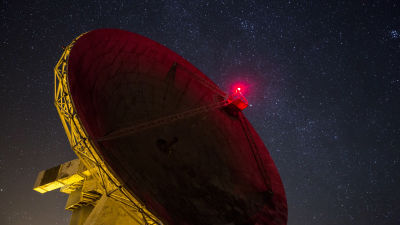Cornwall's Goonhilly Earth Station makes history in tracking NASA Artemis 1 launch

Goonhilly Earth Station in Cornwall has made history today by being the only tracking support in the UK for NASA's successful Artemis 1 Moon launch.
Artemis 1 launched early on Wednesday morning (November 16), sending an uncrewed Orion capsule into orbit on NASA's huge Space Launch System rocket.
The team at Goonhilly on the Lizard Peninsula is tracking the Orion Capsule, and alongside partner the ESA, communicating with a number of small satellites being launched on the mission.
Goonhilly's GHY-6 deep space antenna will receive radio signals from the spacecraft, which will travel up to 448,000 km away from Earth over the next month.
Ian Jones, CEO at Goonhilly Earth Station said: “Being asked to participate in this landmark NASA mission as one of the key ground stations is an immense privilege for all of us at Goonhilly. Both NASA and ESA are moving towards a commercial model for lunar communications and Goonhilly is the world’s only facility that is set up, qualified and ready to provide this service.''
''Our team has worked tremendously hard over the last several years to get us to this position. Our experienced operators have been working closely with the various lunar missions that will be carried onboard Artemis 1.''
Artemis 1 is the first in a series of increasingly complex Artemis missions that will see humankind return to the moon by 2025, and the eventual exploration of Mars.
Artemis 1 is sending an uncrewed Orion Capsule in orbit around the moon and back to test its systems ahead of a crewed flight planned in 2024. The aim is to prove that the SLS and Orion are ready for astronaut missions.
Orion is due to return to Earth on 11th December 2022, landing into the Pacific Ocean off the Californian coast.
Speaking in advance of the mission Sue Horne, Head of Space Exploration at the UK Space Agency said: ''The operational support work that our colleagues are doing in Goonhilly demonstrates a significant step forward for our capacity to offer commercial lunar communications from the UK. The Artemis programme marks the next chapter of human space exploration, and we look forward to continued involvement as it comes to life.”
The Artemis programme also aims to set up a crewed outpost near the lunar south pole and a moon-orbiting space station called Gateway.